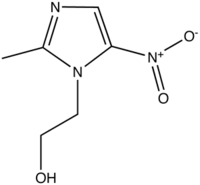Miami Beach -- From treating skin disorders to addressing cosmetic problems, combining treatment modalities such as light sources, pharmaceutical interventions and cosmeceuticals allows physicians to give patients the best of both worlds--and sometimes all three.
"The idea behind combination therapy is to maximize improvement in our patients both clinically and cosmetically, depending on the indication," says Mark S. Nestor, M.D., Ph.D., director, Center for Cosmetic Enhancement and clinical associate professor of dermatology and cutaneous surgery at the University of Miami School of Medicine, Miami.
For diseases such as rosacea and melasma, Dr. Nestor's approach frequently involves combining lasers or light sources and pharmaceuticals, as well as cosmeceuticals.
Dr. Nestor tells Cosmetic Surgery Times, "Rosacea can be broken down into three different types: papular-pustular, telangiectatic and rhinophymatous--and they often overlap. In terms of combination therapy, we combine devices such as the Lumenis One (Lumenis), intense pulsed light (IPL) or photorejuvenation devices with topicals such as metronidazole (Galderma), MetroGel (metronidazole, Galderma) or MetroLotion (metronidazole, Galderma) and sunblock, as well as (recommending) some lifestyle changes. Rosacea can be set off by certain triggers, including hot or spicy foods and sunlight. In combining the procedure and the pharmaceutical, as well as lifestyle changes and topical treatments, we get fabulous results."
Telangiectatic rosacea
For telangiectatic rosacea, Dr. Nestor tends to emphasize procedures such as photorejuvenation because it can dramatically reduce telangiectasias. Other devices he uses for this purpose include 532 nm and pulsed-dye lasers.
"These patients don't benefit as much from pharmaceutical interventions. But patients can have some pustular and papular rosacea along with telangiectatic, and certainly papular and pustular rosacea respond to pharmaceutical intervention. Flushing is often associated with papular and pustular rosacea, but it's especially linked to the telangiectatic component," he says.
Rhinophymatous
For rhinophymatous changes including mild thickening of the sebaceous skin, Dr. Nestor tends to use photodynamic therapy (PDT) with Levulan (aminolevulinic acid/ALA, Dusa Pharmaceuticals) and pulsed-dye laser treatments.
"In addition," he says, "patients with thicker rhinophymatous changes can benefit most from a treatment such as an ablative C[O.sub.2] laser or erbium laser."
Melasma
Similarly, melasma responds very well to combinations including a variety of nonablative and ablative laser treatments such as photorejuvenation and microdermabrasion.
"Triple combination treatments as were found with Tri-Luma (fluocinolone acetonide 0.01 percent, hydroquinone 4 percent, tretinoin 0.05 percent, Galderma), as well as extensive use of broad-spectrum sunblocks--and educating patients to stay out of the sun--also work well for melasma," Dr. Nestor says.
Other hyperpigmented disorders such as sun damage and lentigines, on the other hand, can benefit from the Q-switched ruby laser, as well as others. For post-inflammatory hyperpigmentation (PIH), Dr. Nestor recommends combining topical pharmaceuticals and cosmeceuticals such as kojic acid with photorejuvenation.
Acne
"Our approach to acne has changed dramatically in terms of how we use combination therapy. Comedonal acne responds to combinations such as significant cleansers with devices such as the new Clarisonic (Pacific Biosciences Laboratories), a cleansing device that helps get rid of the comedones, as well as retinoids like adapalene (Differin, Galderma)," he says.
Papular-pustular acne responds to topical treatments including retinoids and antibiotics (both topical and oral).
"But very often," Dr. Nestor says, "we're now using 420 nm blue light in addition to those treatments to achieve some dramatic improvements. And at times, we use photodynamic therapy (PDT) for these patients."
Acne's cystic component responds to cleansers (preferably nonirritating), oral antibiotics and, when necessary, isotretinoin.
"More and more," he says, "we're using PDT on these patients, with some impressive results using ALA and pulsed-dye laser treatments, as well as blue light and ALA. When the patients have been cleared and have scarring, scarring often responds to laser treatments such as CoolTouch Nd:YAG (CoolTouch) and SmoothBeam (Candela Corp.), as well as some newer lasers such as the Fraxel (Reliant Technologies). So there is hope for every stage of acne."
"Pregnancy is a very special circumstance," he adds. "For pregnant acne patients, we don't use retinoids. We very often use noninvasive treatments such as microdermabrasion, as well as cleansers, and a lot of blue light, because it has no side effects for pregnancy. And when necessary, we use topical antibiotics such as Cleocin (clindamycin, Pharmacia & Upjohn) or erythromycin."
To treat actinic damage, Dr. Nestor frequently uses photodynamic skin rejuvenation with IPL and ALA, compounded with pharmaceuticals including imiquimod (Mdara, 3M) on thicker lesions.
"IPL treatment also helps with the blood vessels and telangiectasias" he says. "And in many of these patients, we tend to use retinoid treatments such as adapalene because of their effect on sun damage. These patients need to be careful about sun exposure, but they tend to do extremely well."
For cosmetic treatments, selecting combination treatments depends on what problem or problems the physician wishes to address.
Dr. Nestor explains, "Whether it be lines and wrinkles or sun damage and pigment problems, we combine a lot of devices together such as ThermaCool[TM] (Thermage[R]) or the Titan laser (Cutera) and photodynamic skin rejuvenation. For the deeper lines and wrinkles, we often use erbium laser coupled with topical treatments. And for fine lines, we can augment with nonablative lasers such as the CoolTouch and SmoothBeam. Combining such treatments with botulinum toxin and fillers like Restylane (QMed/Medicis) can yield wonderful results."
He says, "the goal of combination therapy both clinically and cosmetically is to use a number of different types of treatments--pharmaceutical, cosmeceutical and device--overall nonablatively and without downtime to get the best results for our patients," Dr. Nestor concludes.
Disclosure: Dr. Nestor serves on physician advisory boards for Dusa Pharmaceuticals and Lumenis. He's also a speaker for companies including Galderma and Abbott Laboratories.
COPYRIGHT 2005 Advanstar Communications, Inc.
COPYRIGHT 2005 Gale Group



